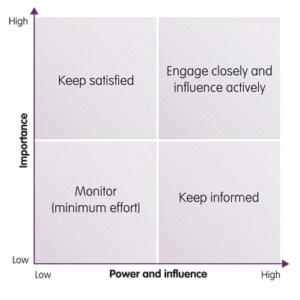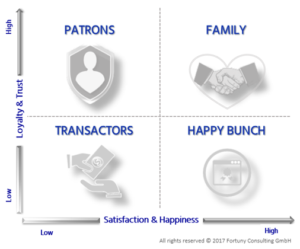
Now, more than ever, does the word “stakeholder” increase on importance as there are greater number of involved parties that affect or can be affected by an organization. Now, more than ever, does the word go beyond the old-fashioned focus on shareholders or customers in isolation. Now, more than ever, is focusing on all stakeholder groups, treating them with respect, care and kindness critical to a sustainable business growth.
But when it comes to the official Stakeholder Mapping models out there, none of them seems to reflect the current reality. None of them seems to give business leaders clear guidance to map out their stakeholders net effectively. None of them seems to help companies stay relevant and achieve sustainable business growth, making Stakeholder Mapping an often ignored activity.
1681% Growth via Stakeholder Focus
The pioneers mastering the Stakeholder Relationship Management (SRM) who moved away from the “Either – Or” thinking (Shareholders Vs. Customers) were the so called “Firms of Endearment” including companies as Patagonia or Whole Foods. By focusing on making all of their stakeholders taken care of and satisfied, they managed to out-perform the S&P 500 companies by 14 times and Good to Great companies by 6 times over a period of 15 years (1998-2013). But such companies don’t benefit only from achieving exceptional profits and business growth of 1681%. They are the companies classified as the “lovemarks” by their customers, the “Best Employers” by their staff and the “Social Impact Catalysts” by the society.
Current Stakeholder Mapping Models out There
Looking through the book called: Key Management Models of 60+ models (2nd edition, 2009), reviewing models “every manager needs to know”, Stakeholder Relationship Management (SRM) is not included at all. Still, there are many stakeholder mapping techniques out there: One classifies stakeholders based on their potential for threat and the potential for cooperation, other compares their attitude together with their knowledge. Many of you might be familiar with the Importance & Influence Stakeholder Matrix, used by companies to identify the most important and most influential stakeholders and …focus on them, with priority (see image 1 below for details).

Fortuny’s Loyalty & Satisfaction Stakeholder Matrix (LSSM)
Looking into all these stakeholder mapping models we realized at Fortuny, that none of them, in our view, looked at the right dimensions. None seemed aligned to our Integrated Stakeholder Ecosystem model, where all stakeholders are important. Where all have to be treated well, not as means to an end, but as valued participants in the interconnected system with the joint vision of making the world a better place. At Fortuny, we have therefore developed the Loyalty & Satisfaction Stakeholder Matrix (LSSM), helping our clients to accelerate their business growth by mapping their stakeholders based on loyalty & trust and satisfaction & happiness.

But why these two dimensions?
First of all, a supplier, investor or a customer who trusts your business and is loyal, comes back, promotes your brand and is willing to offer you a better deal (even in times of crisis), invest more money when needed or is willing to pay extra for your product or service. You can look at it from the marriage perspective: “in the good times and the bad”, they will stand by your side.
Secondly, happy and satisfied customers, with a positive experience tend to stick around in the long-term, and so do your suppliers or investors. employees, which together with loyalty and trust can help you build commitment and retain talent.
About the LSSM Series
At Fortuny we believe focusing on these two dimensions is critical in building long-term relationships across various stakeholder groups and accomplishing sustainable business growth. If you omit them, your business might work perfectly in the short-term, but when market conditions change, or crisis hits, your chances for survival drop.
In this series we will explore in depth the four quadrants of the LSSM: The Patrons, Family, Transactors and the Happy Bunch, looking at the advantages and disadvantages of each and mainly identifying the key tactics to take to move your stakeholders towards the “Family” quadrant, being the stakeholder category bringing in most profits, ambassadorship and brand boost.
YOUR TURN!
Before moving on, stop and think: Who are your stakeholders? Which Stakeholder Mapping model are you currently using? What strategies do you follow in order to monitor and manage your stakeholders, assuring you build loyalty & trust and satisfaction & happiness?









